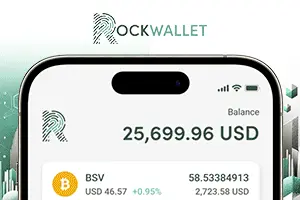|
Getting your Trinity Audio player ready...
|
I have had a bunch of these ideas kicking around in my head for years, and I’m going to start giving them out to entrepreneurs so we can get this party started in the Ternode era. If you turn my idea into a thriving company, please credit me and/or throw me a bone!
Now, for the content!
- From muscle power to token power
- Meet the players in the fitness loop
- The formula behind fitness rewards
- A sustainable model for your fitness journey
- Earn, redeem, and keep value moving
- BSV, the blockchain built for scale
- Stories of sweat to value
- Developing the core
Big idea
You already spend money on gym memberships, subscriptions, and gadgets to stay healthy. You already sweat through workouts that no one else sees, unless you’re me, I guess!
What if each mile, rep, and recovery session could earn you something tangible? Imagine a system that measures legitimate exercise, issues a token for progress, and lets you redeem those tokens for real benefits. XFIT proposes to turn proof of work on your body into proof of value on a blockchain.
I have been a gym rat for over 15 years. I’m a Jiu-Jitsu black belt, a former MMA coach, and current (mostly recreational) BJJ athlete and coach, and I lift weights at least 5 days per week.
For the last (almost) 5 years, I have also been a serious Whoop user for my fitness tracking, and I use the Speediance Gym Monster for at-home workout tracking, and it occurred to me that all the data for my strength, health and wellness is out there somewhere, and the only thing I’m earning for it is my social media critics reminding me that while I am in pretty good shape, I am still bald!
What is XFIT Token?
XFIT is a proposal for a utility token built on the BSV blockchain that rewards verifiable exercise captured by a wearable sensor (like Whoop.) When you record legitimate strain, steps, strength work, or aerobic improvement, you earn XFIT. The token is not a speculative asset but a points system backed by real discounts on fitness subscriptions and gym partners. It aligns incentives: people get paid for being active, coaches and communities get paid for curating challenges, and gyms get new customers. All of this runs on the BSV network using microtransactions that cost a fraction of a cent per transaction.
Who gets paid, for what, and why
Athletes: The system pays users for daily effort, measured by objective metrics rather than vanity steps. You collect a small base reward for any verified session of ten minutes or more. On top of that, you earn extra for healthy strain, reasonable steps or distance, quality strength repetitions, and consistent streaks. A small tax on your daily earnings flows into a recovery pool that pays out when you prioritize rest and sleep. The more consistent your improvement (for example, notable progressive overload in your lifts or increased VO₂ max), the higher your weekly bonus.
Coaches and communities: Fitness leaders create paid challenges; say a month‑long running club, a rep‑count competition, or a VO₂‑max improvement league. Participants pay a tiny fee in XFIT, MNEE, or BSV, and a portion feeds a prize pool while the curator earns a curation fee. Communities can also earn by curating high‑quality content and moderating discussion forums. This rewards good programming and stewardship.
Gyms and partners: Brick‑and‑mortar gyms gain new traffic when XFIT holders redeem tokens for day passes, monthly discounts, or training sessions. Partners mint single‑use coupons via an API. When a user redeems a coupon, half of the tokens are burned (reducing supply) and half are recycled into the rewards pool. The partner receives settlement in fiat, BSV, or MNEE and enjoys new business from motivated, proven exercisers.
Everyone participates because they either earn value (athletes), curate and monetize experiences (coaches), or attract customers (partners). The token is designed to circulate through the fitness ecosystem rather than sit idle.
How the rewards work
XFIT calculates earnings from a mix of metrics to encourage balanced training:
- Base reward: You earn a fixed two tokens (illustrative) for any session of ten minutes or more, once per day. This acknowledges that showing up matters.
- Strain score: Wearables like WHOOP quantify strain on a scale from 0 to 21. Moderate strain earns more than low strain, but the curve flattens at the extreme to discourage overtraining. For example, a strain of 8 might earn one token; a strain of 14 earns three; a strain of 20 earns slightly less than 14.
- Steps and distance: Walking and running count. Every thousand steps or mile (illustrative) earns a small fraction of a token, capped to prevent extreme farming. Only verified steps with accompanying heart‑rate elevation count.
- Strength reps: Weightlifting is rewarded based on quality reps: rep tempo and heart‑rate spikes separate real effort from empty movement, so a squat counts; bouncing a curl does not.
- Streaks: Consistency pays. Hitting your base goal five days in a row triggers an extra token. Streaks reset after a missed day.
- Recovery bonus: A portion of your daily earnings is “taxed” into a recovery pool. When you record a day with good recovery (sleep quality, heart‑rate variability (HRV) and down‑time) the pool pays out. This promotes rest and avoids burnout.
Anti‑gaming measures bind each wearable’s device ID to the user, sign sessions with nonces to prevent replay, and run outlier detection to flag zero‑variance heart‑rate patterns, long flat sessions, or GPS “teleportation.” Cool‑downs limit you to two sessions every six hours and force at least 30 minutes between them. Persistent flags trigger manual review, and obvious cheats are shadow‑banned. Users control how much data they share; only salted hashes and minimal scores appear on‑chain, while raw metrics are encrypted off‑chain.
Here’s what a day might look like: You go for a 30‑minute jog (strain 10), rack up 6,000 steps, and hit a streak of five days. You earn a two‑token base, two tokens for strain, 0.06 tokens for steps, and one token for the streak, minus a 0.3‑token tax into the recovery pool. Net: roughly five tokens. Over a week, with four runs and two strength sessions, your weekly bonus for improved VO₂ max kicks in and adds five more tokens.
All of this settles to your wallet automatically.
Tokenomics at a glance
- Supply: XFIT has a fixed supply of one billion tokens. Forty‑five percent of funds earned pools over ten years, decaying every 2.5 years; emissions shrink by 40% each epoch. Twenty percent goes to an ecosystem treasury, unlocking monthly over four years, to fund infrastructure and partner grants. Ten percent each is allocated for grants and partners (vested over 36 months), liquidity and market operations (time‑locked, rule‑based market making), and the team/advisors (vested over four years with a one‑year cliff). Five percent is reserved for audit and bounty rewards.
- Emissions: Daily rewards come from the earn pool, flowing only to verified activity. Weekly improvements and streak bonuses also draw from this pool. Over time, the pool shrinks, gradually reducing new supply.
- Sinks: Redemption drives deflation. WHOOP subscription discounts burn half of the redeemed tokens and recycle the other half back into the earn pool. Gym coupons burn 25%, lock 25% for 90 days, and recycle 50%. Challenge entries and vanity profile features burn 10%, recycle 90%. Personal best (PB) archive non-fungible tokens (NFTs) burn half of the tokens spent. These mechanisms keep the supply from inflating and encourage ongoing activity.
- FX rails: Users buy XFIT with BSV or MNEE at spot via an integrated swap, or swap their earnings back into BSV. MNEEgram (let’s build MNEEgram, folks!) provides cross‑border liquidity and stable rates. Creators and partners can cash out to fiat through regulated corridors as required.
Real value redemption that matters
For a token to matter, it must purchase something you value. In XFIT’s initial design, the first anchor partner is (proposed to be) WHOOP itself. You can trade tokens for discounts on the strap subscription: 100 XFIT might shave five percent off one month, 350 XFIT might discount 20%, and 1,800 XFIT might discount 20% off a full year. Perhaps, the top 0.5% of earners also get their WHOOP membership for free.
The platform pledges to buy back an equivalent amount of tokens on the market each month, burning half and recycling the rest, so redemptions reduce supply and support price stability.
Beyond the sensor subscription, gym partners such as Planet Fitness or Lifetime Fitness or LA Fitness can offer day passes, monthly discounts or session credits. They mint single‑use coupons via an API, embed metadata about location, tier and expiry, and settle redemptions in fiat, BSV or MNEE while half of the tokens are burned. This drives real revenue to brick‑and‑mortar businesses and ensures that tokens buy tangible benefits rather than vanity NFTs. The success of these perks hinges on vendor integration; meaningful discounts will obviously require corporate agreements, data privacy addenda, and brand approval.
Why only BSV can carry this at scale
Rewarding workouts is useless if settlement costs more than the reward or if the network cannot handle the volume. XFIT depends on numerous micropayments and receipts: every session logs a WorkoutReceipt on-chain, and every redemption writes a RedemptionClaim. The BSV network is uniquely suited to handle this:
- Micropayments: 1Sat tokens (BSV21) allow you to send fractions of a cent. A small streak bonus worth $0.01 is economically viable when transaction fees are less than a thousandth of a cent.
- Throughput: Teranode’s parallel microservice architecture processes millions of transactions per second (TPS), far beyond the capacity of legacy blockchains. A global fitness platform with millions of users could post receipts for every workout without congestion.
- Fast finality: Settlement on BSV clears in under ten minutes, giving vendors confidence that their redemptions are final and funds will not be reversed.
- Data modeling: BitcoinSchema.org defines standard objects (WorkoutReceipt, RepTierUnlock, VO₂TrendProof, RedemptionClaim) so that wallets, dashboards, and analytics tools speak the same language. JungleBus indexes these objects in near real time, making it easy to verify scores and audit emissions.
- Identity and privacy: Sigma Identity provides selective disclosure credentials, enabling proof of age or residency without revealing personal details. Users can demonstrate compliance for age‑gated competitions while keeping medical data off chain.
- Payments and overlays: BSV SDKs and overlay services let developers wire up payment channels, identity checks and data storage with minimal friction. MNEEgram integrates cross‑chain liquidity for redemptions.
No other blockchain offers this combination of negligible fees, unbounded throughput, fast finality and robust data tools. Without them, a fitness rewards system either inflates the token with off‑chain points or charges more in fees than the reward is worth.
Examples you can picture
A new walker: Jane is a 45‑year‑old who buys a WHOOP strap and starts taking twenty‑minute walks every morning. In her first week she logs five sessions. She earns the base two tokens each day, an extra token for hitting a five‑day streak, and small fractions for steps. Her weekly bonus for a slight VO₂ max improvement adds two more. After a week, she has around fifteen XFIT. She likes the system and plans to save for a small subscription discount.
A consistent lifter: Mike lifts heavy weights four days a week. His sessions include squats, bench presses, and deadlifts. He earns the base reward, plus substantial strength‑rep points because his heart‑rate spikes confirm real effort. His streak bonus adds up. At the end of the week, he redeems 350 XFIT to get 20% off his next month of WHOOP service and burns some tokens in the process. He still has tokens left to enter a bench‑press competition curated by his gym.
A competitive athlete: Sarah is a CrossFit competitor. She logs high‑strain sessions six days a week and enters a sport‑specific leaderboard that charges a nominal entry fee in MNEE with a portion paid in XFIT. She moves up the leaderboard (Remember Haste ILP??), thanks to her consistent improvement and receives micro‑payouts as she climbs.
At week’s end, she redeems 1,800 XFIT for a 20% discount on a year of WHOOP, then uses her remaining tokens to get a discount on a day pass at a partner gym while traveling for competition.
Call to builders
The blueprint is clear; now it needs builders. If you develop on BSV, start by implementing the WorkoutReceipt and RedemptionClaim schemas in BitcoinSchema. Wire up Sigma for identity and selective disclosure; integrate with WHOOP’s APIs to fetch strain, HRV, and VO₂ max trends; and issue BSV21 tokens through the 1Sat Ordinals protocol. Use JungleBus to index receipts and pay out tokens in near real time. Next, partner with a gym or fitness app and pilot redemption with clear tiers. Measure emissions versus sinks over a few months, adjust caps and formulas, then open the API to more partners. The health industry is massive; an open, verifiable rewards economy on BSV can capture a slice of it and create a new revenue stream for those willing to build.
And if you build it, I’ll be your first customer!
Watch: The Autonomous Data Pipeline with Miss Pearl Nwade

 12-10-2025
12-10-2025 





